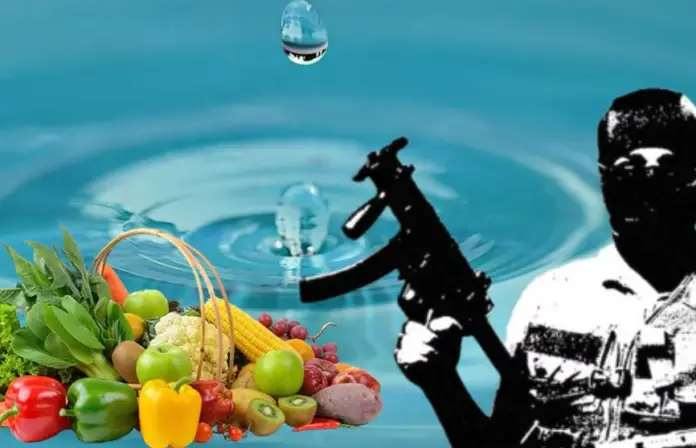On the global horizon of organized crime, the future already has a name: the fifth wave. This is how the report, The Fifth Wave: Organized Crime in 2040, published by the Global Initiative Against Transnational Organized Crime (GI-TOC) in November 2024 and signed by academic Phil Williams, describes it. The document warns that criminal organizations will stop focusing exclusively on drugs and will migrate toward controlling strategic resources such as water, food, and minerals, taking advantage of the climate crisis, emerging technology, and failures in state governance.
But in Mexico, this prediction is no longer the future: it is the present. For the past couple of years, various cases documented by national and international media show how organized crime has begun to capture the markets for water, grains, energy, and basic foodstuffs, extending its power beyond drug trafficking, diversifying its sources of income, and subjecting entire communities to thirst and hunger.
From Avocado Control to Corn Hoarding
Williams’ report suggests that water could become “the new fentanyl,” while staple foods such as grains and tubers would be the next targets for criminal groups. Although the analysis projects these dynamics toward 2040, these forms of capture have already been reported in multiple regions in Mexico.
In September 2022, the Confederation of Industrial Chambers warned that organized crime controlled food prices and supplies in at least seven states: Guerrero, Mexico City, Michoacán, Puebla, Tlaxcala, Veracruz, and Zacatecas.
According to the organization’s statement, criminal groups not only impose conditions on suppliers but also block distribution routes, threaten transporters, destroy trucks, and decide who can sell or buy products such as avocados, lemons, and chicken.
The avocado industry, estimated to be worth $3 billion annually according to the Global Initiative Against Transnational Organized Crime, is one of the most emblematic cases.
As journalist Peter Appleby documented in March 2024, criminal groups not only extort producers but also promote the expansion of the agricultural frontier through illegal deforestation, displacing residents, and facilitating land-use change through the corruption of local authorities.
The corn and tortilla industry is facing a similar situation. A report by The Washington Post, published in May 2024, revealed that approximately 15% of tortilla factories in Mexico (approximately 20,000) are victims of extortion by criminal groups, who control everything from gas supplies to grain transportation.
In states like Sinaloa, these groups also control the distribution of water for corn crops, restricting access to the natural resource and forcing producers to pay fees to avoid attacks or looting.
Water, a commodity of crime

The capture of water resources, anticipated as a future trend in Williams’ report, is already a reality in states like Chihuahua and Chiapas.
In Chihuahua, an investigation published in 2024 by Vice News, by journalist Luis Chaparro, revealed that a cell of the Sinaloa Cartel set up a network of cisterns, pumps, and kilometers of pipes to divert water from rivers and streams to their marijuana and poppy crops in the Sierra Tarahumara, amid the drought.
Farmers in the region reported that they need “permission” from the cartel to access water and that even hotels and restaurants pay for the supply controlled by the criminal organization.
On the Chiapas border with Guatemala, residents of the municipalities of Bella Vista and La Grandeza reported in December 2023 that alleged members of the Sinaloa Cartel cut off their water, electricity, and internet services in retaliation for not collaborating with highway blockades organized by drug traffickers.
This form of coercion includes conducting household censuses to identify who can be recruited and who will be punished, as journalist Ángeles Mariscal also reported for Aristegui Noticias.
Collusion
The spread of water and food crime in Mexico does not occur in isolation. As journalist J. Jesús Lemus explained in a column published in December 2020 in the Los Angeles Times en Español, state corruption and the involvement of large corporations—especially in the mining and agribusiness sectors—have facilitated the dispossession of water from communities.
According to the data cited in this article, companies such as Grupo México, Goldcorp Inc., Cemex, and Frisco hold the largest number of water concessions in the country, while millions of people lack daily access to the resource.
Lemus also warned about the presence of criminal cells offering intimidation and deterrence services to companies seeking to maintain control of water resources in the face of social movements.

Source: infobae




